

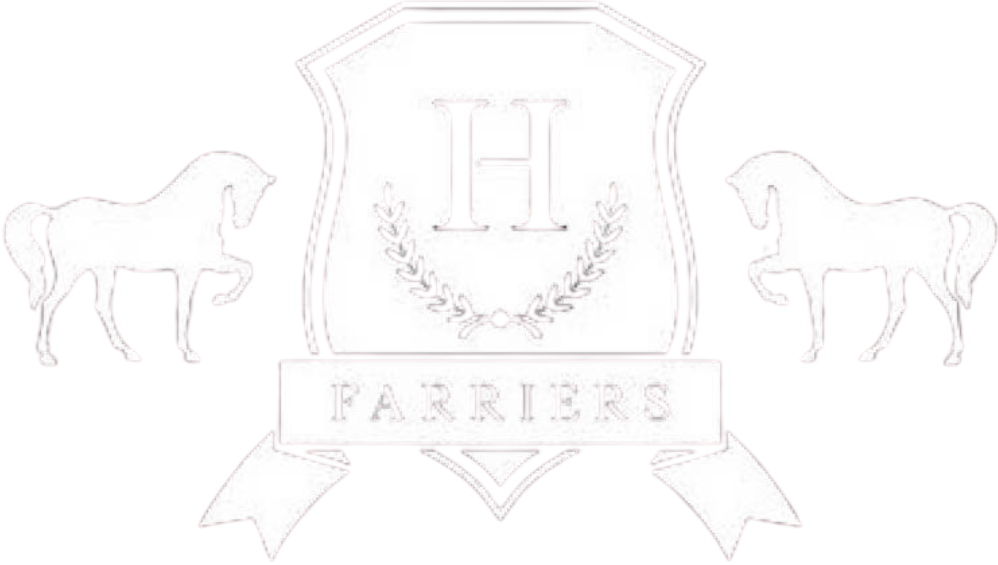


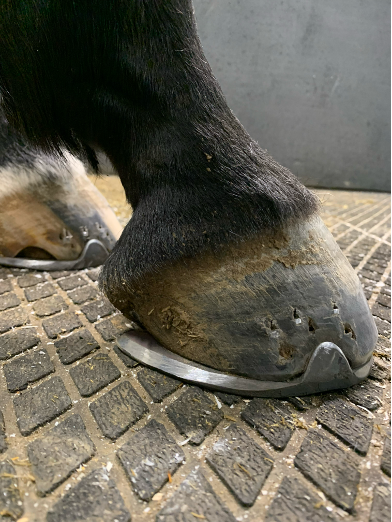
This is a small illustration of the importance to watch horses move before we shoe them. Horses work on different surfaces and we as farriers need to keep them balanced, comfortable and supported in the areas where conformation lets them down. The hoof capsule is a marvel of engineering and adapts to the conformation of the horse and the conditions it lives in.
We expect horses to compete on different surfaces wearing the same shoes. For example, eventing. We expect them to dance on the beach, gallop on compact long distance grassy cross-country tracks and stop and turn on thick kikuyu arenas. Not all shoes react the same way to different surfaces. More support is needed for soft dressage arenas; grip is needed for compact hard galloping tracks, and support is needed as a platform for take-off and landing and jumping scenarios.
Below is a dressage horse competing at a high level. Video one is of moving on a hard surface inside the stable block. If you focus on the on the lower limb, including the hock and fetlock, you will notice a slight lateral hock and fetlock movement/Rotation. This is not excessive. But needs addressing.
The next video the horse was long line and soft arena surface. This is a very high-end quality indoor arena and was built to high standards. But you will notice the increase in lateral movement in the hindlimb as the lateral heel penetrate the waxy surface, forcing extensive lateral movement on the fetlock and hock. This will add unnecessary wear and tear and strain on the joints and the collateral ligaments holding the joints together. This also opens the horse up to soft tissue strains and injury.
The increased movement of the hindlimb now changes the shoeing protocol, from a benefit to a necessity. To keep these athletes competing at the high level the shoeing is in required to lay a platform and a solid foundation to benefit the conformational defect and necessary support where needed.
On the last video you will notice the reduction in lateral movement on the soft surface, allowing for a more stable hindlimb, allowing the horse the foundation to propel himself forward and reach the propulsion needed to fulfil a active Hind limb movement to complete the test and high end movements that is required of him.
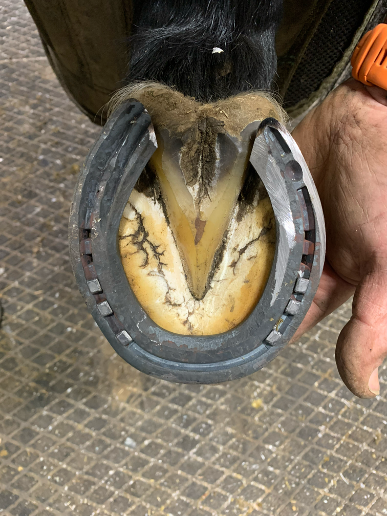

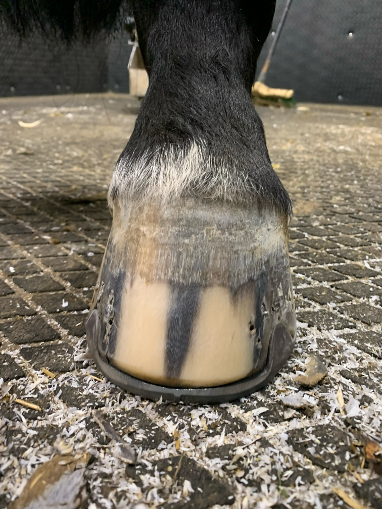
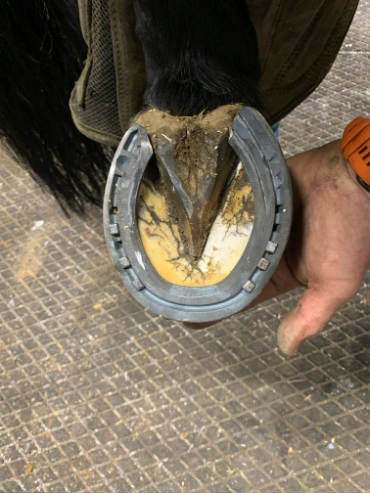
This is a small illustration of the importance to watch horses move before we shoe them. Horses work on different surfaces and we as farriers need to keep them balanced, comfortable and supported in the areas where conformation lets them down. The hoof capsule is a marvel of engineering and adapts to the conformation of the horse and the conditions it lives in.
We expect horses to compete on different surfaces wearing the same shoes. For example, eventing. We expect them to dance on the beach, gallop on compact long distance grassy cross-country tracks and stop and turn on thick kikuyu arenas. Not all shoes react the same way to different surfaces. More support is needed for soft dressage arenas; grip is needed for compact hard galloping tracks, and support is needed as a platform for take-off and landing and jumping scenarios.
Below is a dressage horse competing at a high level. Video one is of moving on a hard surface inside the stable block. If you focus on the on the lower limb, including the hock and fetlock, you will notice a slight lateral hock and fetlock movement/Rotation. This is not excessive. But needs addressing.
The next video the horse was long line and soft arena surface. This is a very high-end quality indoor arena and was built to high standards. But you will notice the increase in lateral movement in the hindlimb as the lateral heel penetrate the waxy surface, forcing extensive lateral movement on the fetlock and hock. This will add unnecessary wear and tear and strain on the joints and the collateral ligaments holding the joints together. This also opens the horse up to soft tissue strains and injury.
The increased movement of the hindlimb now changes the shoeing protocol, from a benefit to a necessity. To keep these athletes competing at the high level the shoeing is in required to lay a platform and a solid foundation to benefit the conformational defect and necessary support where needed.
On the last video you will notice the reduction in lateral movement on the soft surface, allowing for a more stable hindlimb, allowing the horse the foundation to propel himself forward and reach the propulsion needed to fulfil a active Hind limb movement to complete the test and high end movements that is required of him.






